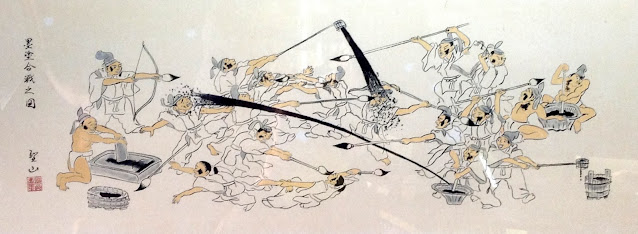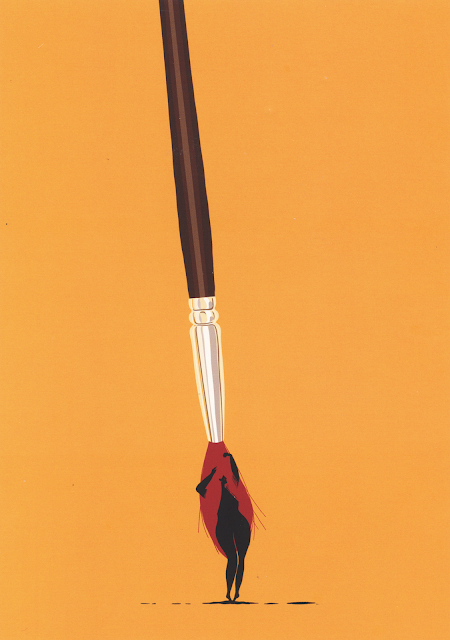There's a long tradition of wars with-- and about-- ink:
(The Ink Battle by Utagawa Kuniyoshi 1843)
Ink has left a trail of rivalry, braggadocio, hostility and sometimes just general commotion.
Ink as a weapon can be flung, spattered and scrubbed; it can be a tool for slapstick and a tool for marking rivals with an indelible stain.
 |
| (Toshikage, 7 Gods Fighting with Ink, 1888) |
 |
| (The Ink War) |
 |
| (Ralph Steadman, the Malevolence of War) |
But when it comes to the heart of ink, Alice Mollon may have a wiser understanding.
 |
| Alice Mollon's illustration of ink slipping nude into the world |
It's not that Kuniyoshi is wrong; it's just that there are more important truths in Mollon's delicious picture of ink taking form from the brush.
But the few subtle details are so well chosen, anything more would've been less. The toes turned inward, the brush that doubles as hair so effectively, the raised arms that help create a feeling of liquid flowing from the concealment of the brush, to take shape on the dry surface below. This picture reminds me of Botticelli's Birth of Venus.
Nicely done.





%20(800x422).jpeg)